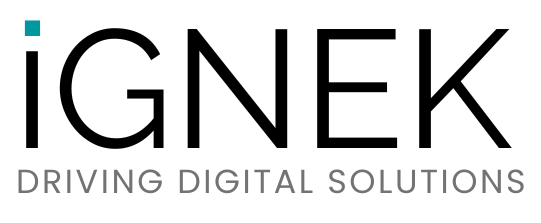Introduction
When it comes to building enterprise-level applications, one of the most critical decisions is choosing the right backend framework. Node.js has long been a popular choice due to its event-driven, non-blocking architecture and powerful scalability. However, when building more structured, maintainable, and scalable applications for enterprises, developers often face challenges that plain Node.js doesn’t fully address. That’s where NestJS comes into the picture.
NestJS is a progressive Node.js framework designed to build efficient, scalable, and enterprise-grade server-side applications. Built on top of Node.js and leveraging TypeScript, NestJS uses a strong and organized structure, similar to Angular. making it an excellent choice for enterprise applications. But why should you choose NestJS over plain Node.js for your next enterprise project? Let’s dive deeper.
1. Structured Architecture
One of the primary reasons for choosing NestJS over plain Node.js is its well-defined architecture. While Node.js is flexible, that flexibility can become challenging in large-scale applications. With plain Node.js, developers are responsible for manually creating an architecture, which can lead to inconsistencies and technical debt in the long run.
NestJS uses the MVC (Model-View-Controller) design pattern and keeps things organized by separating tasks into Modules, Controllers, and Services. This structure not only ensures code reusability but also enhances maintainability as the project grows. In large teams or enterprise environments, having a standard and predictable structure is invaluable.
2. TypeScript Support
While Node.js supports JavaScript, NestJS comes with TypeScript out of the box, offering several advantages for enterprise development:
- Static Typing : TypeScript’s static typing ensures that many potential errors are caught during development rather than at runtime. This is essential in large codebases where undetected errors can lead to significant downtime.
- Enhanced Code Readability : TypeScript helps developers understand the structure of objects and functions better, improving collaboration across teams.
- Better Tooling : With TypeScript, developers benefit from enhanced code editors (like VS Code) that offer intelligent autocompletion, refactoring tools, and real-time error detection.
3. Dependency Injection
NestJS has a built-in dependency injection (DI) system, which is a game-changer for enterprise applications. DI makes it easier to manage dependencies between services, promoting loose coupling and enhancing testability.
In plain Node.js, dependency management often becomes a manual task, which can be hard to handle in large-scale applications. NestJS simplifies this by handling the lifecycle of dependencies for you, reducing the boilerplate code and making it easier to manage complex applications.
4. Modular System
NestJS’s modular architecture allows developers to split the application into self-contained modules. Each module encapsulates related components like controllers, services, and other dependencies. This modularity offers several advantages for enterprise-level applications:
- Scalability : Modules make it easy to scale the application by isolating features and allowing teams to work independently on different parts of the system.
- Reusability : Modules can be reused across different projects, improving development efficiency.
- Maintainability : By breaking down the codebase into smaller, more manageable parts, teams can easily update, replace, or refactor components without affecting the rest of the application.
5. Built-in Middleware and Exception Handling
In enterprise applications, handling errors and exceptions gracefully is crucial for a smooth user experience. NestJS comes with a global exception filter and allows for custom error handling, which makes it easier to manage errors in a centralized and consistent way.
While plain Node.js applications also support middleware and error handling, it often requires more manual configuration and setup. NestJS, with its built-in features, reduces development effort while providing a structured and consistent approach to handling requests, logging, and exceptions.
6. Support for Microservices and GraphQL
In the world of enterprise applications, microservices are becoming a popular architectural style for scaling applications. NestJS has native support for microservice architecture, including message-based communication (via Kafka, MQTT, Redis, etc.), making it an excellent choice for enterprises looking to build scalable and distributed systems.
Additionally, NestJS provides robust support for GraphQL right out of the box. GraphQL is becoming increasingly popular for building APIs due to its flexibility and efficiency. With built-in GraphQL support, NestJS allows developers to easily integrate modern APIs in a structured and maintainable way.
7. Testability
Testing is a critical part of enterprise software development, ensuring reliability and quality. NestJS is designed with testability in mind. Thanks to its modular structure, dependency injection, and built-in testing utilities, writing unit, integration, and end-to-end tests is more straightforward and consistent in NestJS compared to plain Node.js.
Plain Node.js applications often require more manual work to structure the application in a way that makes it easily testable. NestJS abstracts away many complexities and provides built-in tools like Jest to make testing less of a burden.
8. Active Ecosystem and Community
NestJS has a growing ecosystem of libraries and tools that can accelerate development in enterprise projects. With regular updates, an active community, and extensive documentation, NestJS ensures that developers have the resources and support they need to solve complex problems.
While Node.js has a massive ecosystem, the quality and consistency of third-party libraries can vary significantly. NestJS’s ecosystem is more curated and designed for enterprise-grade development, making it a safer choice for long-term projects.
9. Integration with Popular Libraries
NestJS seamlessly integrates with popular libraries and tools commonly used in enterprise applications, including:
- TypeORM, Prisma for database management
- Swagger for API documentation
- Passport.js for authentication
- Bull for queue management
These integrations, combined with NestJS’s modular design, provide out-of-the-box solutions for many common enterprise needs, reducing development time.
Conclusion
While plain Node.js is a powerful and flexible choice for backend development, NestJS offers additional features that make it better suited for enterprise-level applications. Its modular architecture, TypeScript support, dependency injection, built-in middleware, and robust ecosystem provide a structured, scalable, and maintainable platform for developing complex and distributed systems.
For enterprises that prioritize maintainability, scalability, and robust architecture, NestJS is a clear choice. It simplifies development while offering flexibility, which can help businesses deliver reliable, high-quality software more efficiently.
If you’re considering Node.js for your enterprise application, it’s worth exploring what NestJS can offer in terms of productivity, scalability, and long-term maintainability.
















